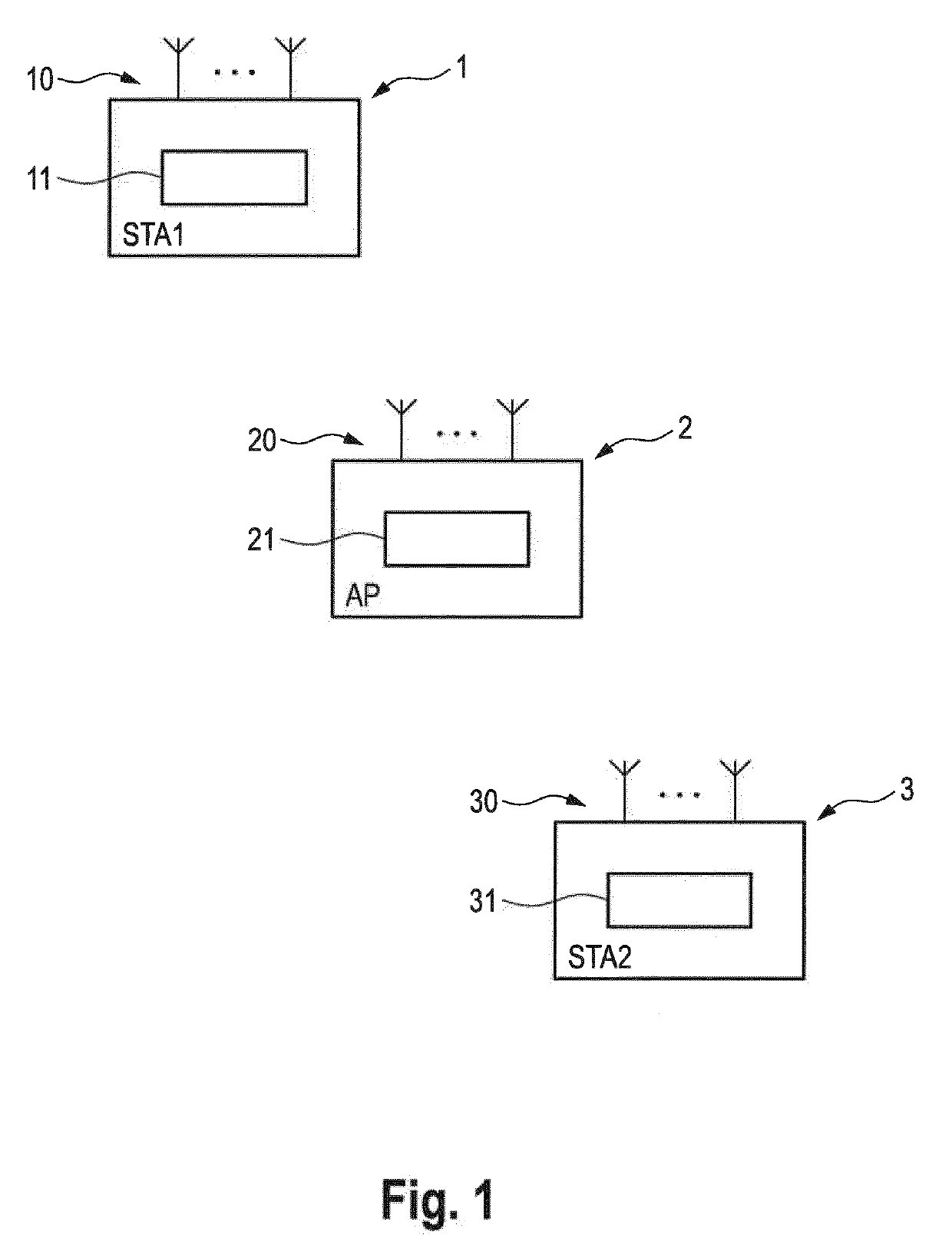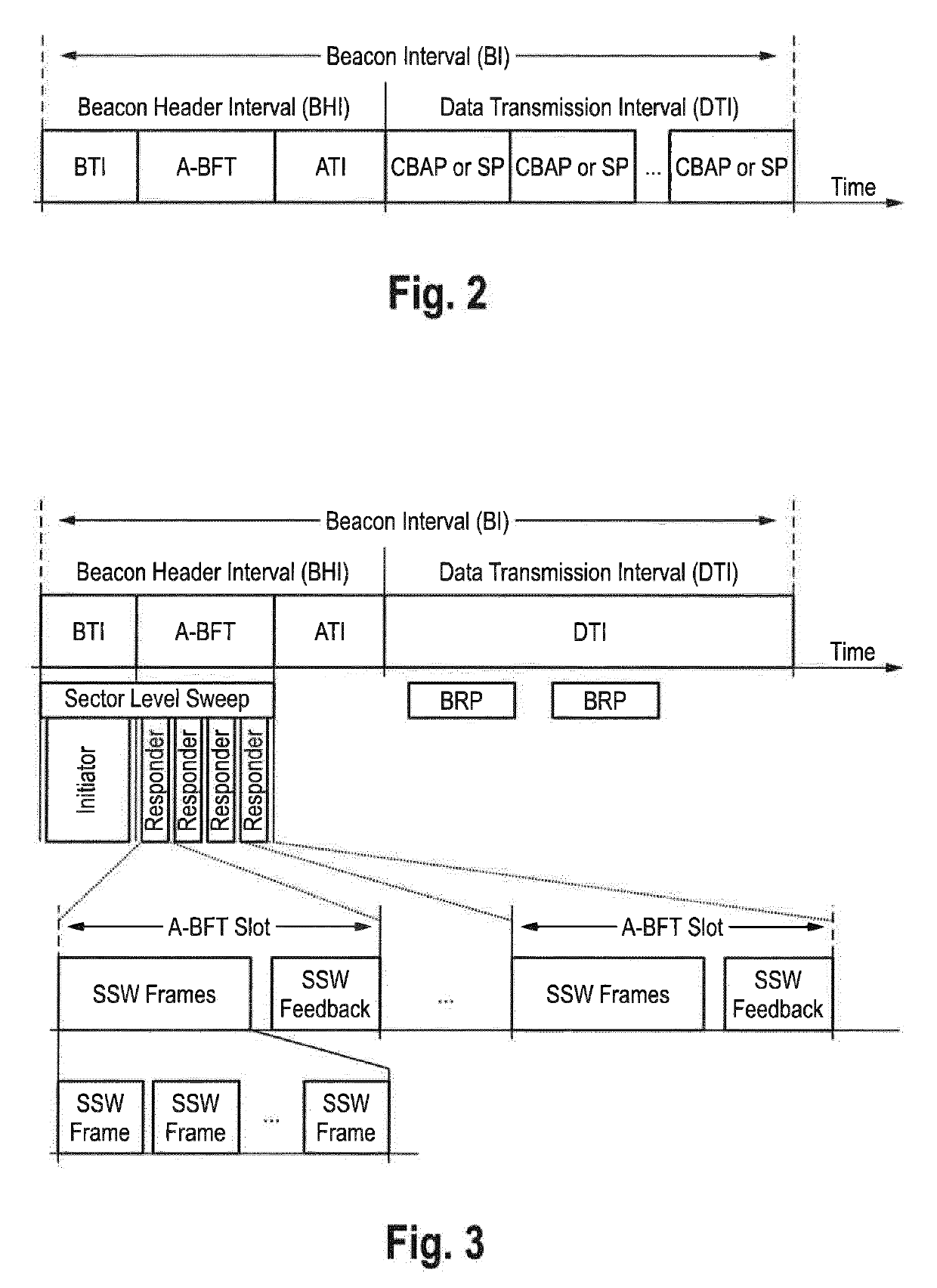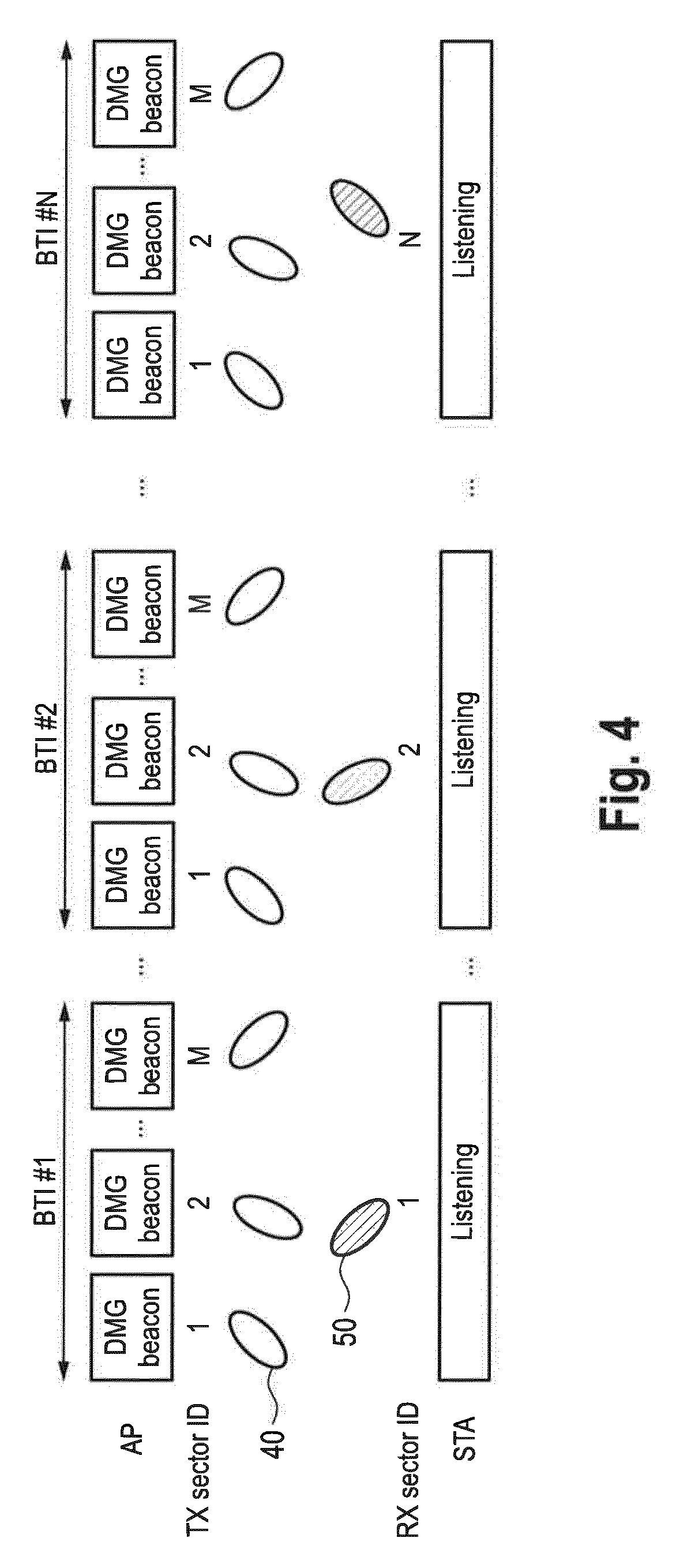Communication devices and methods with beamforming training
a beamforming training and communication device technology, applied in the field of communication devices, can solve the problems of lack of knowledge, strong free space path loss in the 60 ghz frequency range, and difficulty in beamforming training for association, so as to reduce the probability of collision in the association phase, the effect of increasing the antenna gain
- Summary
- Abstract
- Description
- Claims
- Application Information
AI Technical Summary
Benefits of technology
Problems solved by technology
Method used
Image
Examples
case b
[0058]In case B, no AP has been detected and the STA may repeat the listing procedure with various directive beams continuously or at a later point in time.
[0059]It should be noted that the AP may perform no special operations during this training phase. The modifications are mainly on STA side. Therefore, this approach can reuse any BTI such as described in IEEE802.11ad and / or IEEE802.11ay BTI. No dedicated double directive or long range BTI is required. Given that spatial reuse is the main objective of a STA, it may receive with an omni-directional pattern during a single BTI phase like it is done according to IEEE802.11ad. Prerequisite is that the link budget is sufficient to overcome path loss.
[0060]In a second phase (also called association beamforming training phase), the STA TX and AP RX procedure takes place in various DD-A-BFT slots. During a single DD-A-BFT slot, the STA uses different transmit sectors, one for each SSW frame. The AP keeps its receiver pattern unchanged du...
first embodiment
[0062]First, the case shall be considered where reciprocity is available neither at AP nor at STA side. FIG. 5 shows a diagram of association beamforming training with a single STA. In each of the DD-A-BFT slots, the AP listens with a directive beam 60, 62, respectively (“first directive receive beam”). Each DD-A-BFT slot may have a different beam 60, 62 (it may be beneficial to use same receive beam in various DD-A-BFT slots, as will be explained later).
[0063]The STA is transmitting several SSW frames within one or more A-BFT slots, starting from the first A-BFT slot of the DD-A-BFT. In each DD-A-BFT slot, a STA can sweep through M different transmit patterns, i.e. use different directive beams 70 (“first directive transmit beams”). Thereby each SSW frame holds information about the best received AP transmit sector (TXAP, “second transmit beam information”) determined in the BTI phase (see FIG. 4) and the current transmit sector of the STA. In order to receive the SSW feedback (“re...
second embodiment
[0074]FIG. 6 shows a diagram of association beamforming training with a two STAs associating simultaneously. It is assumed that STA 1 and STA 2 have been able to associate in the first and second DD-A-BFT slot, respectively. If a SSW feedback has been received, both AP and STAs have knowledge of the best TX and RX sector ID to use for subsequent communications. Note that only TX sector information is required to be exchanged between AP and STA during SSW frames and SSW feedback, respectively.
[0075]In the example shown in FIG. 6, in a first sector sweep STA1 uses first directive transmit beams 70, STA2 uses first directive transmit beams 80 and AP listens using a first directive receive beam 60. Preferably, in the first directive transmit beams 70 and 80 the information about the best third transmit beam used by the AP in the beacon transmission interval for the respective STA (i.e. TXAP(STA1) and TXAP(STA2), “second transmit beam information”) is included.
[0076]If during the first s...
PUM
 Login to View More
Login to View More Abstract
Description
Claims
Application Information
 Login to View More
Login to View More - R&D
- Intellectual Property
- Life Sciences
- Materials
- Tech Scout
- Unparalleled Data Quality
- Higher Quality Content
- 60% Fewer Hallucinations
Browse by: Latest US Patents, China's latest patents, Technical Efficacy Thesaurus, Application Domain, Technology Topic, Popular Technical Reports.
© 2025 PatSnap. All rights reserved.Legal|Privacy policy|Modern Slavery Act Transparency Statement|Sitemap|About US| Contact US: help@patsnap.com



